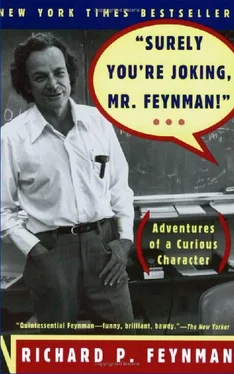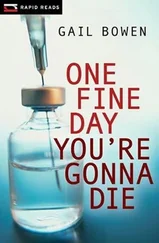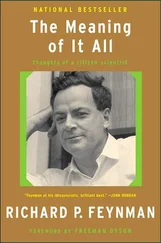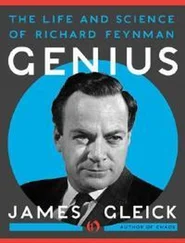They had this process for metal-plating plastics, and the scheme was: First, deposit silver on the object by precipitating silver from a silver nitrate bath with a reducing agent (like you make mirrors); then stick the object, with silver on it as a conductor, into an electroplating bath, and the silver gets plated.
The problem was, does the silver stick to the object?
It doesn’t. It peels off easily. So there was a step in between, to make the silver stick better to the object. It depended on the material. For things like Bakelite, which was an important plastic in those days, my friend had found that if he sandblasted it first, and then soaked it for many hours in stannous hydroxide, which got into the pores of the Bakelite, the silver would hold onto the surface very nicely.
But it worked only on a few plastics, and new kinds of plastics were coming out all the time, such as methyl methacrylate (which we call plexiglass, now), that we couldn’t plate directly, at first. And cellulose acetate, which was very cheap, was another one we couldn’t plate at first, though we finally discovered that putting it in sodium hydroxide for a little while before using the stannous chloride made it plate very well.
I was pretty successful as a “chemist” in the company. My advantage was that my pal had done no chemistry at all; he had done no experiments; he just knew how to do something once. I set to work putting lots of different knobs in bottles, and putting all kinds of chemicals in. By trying everything and keeping track of everything I found ways of plating a wider range of plastics than he had done before.
I was also able to simplify his process. From looking in books I changed the reducing agent from glucose to formaldehyde, and was able to recover 100 percent of the silver immediately, instead of having to recover the silver left in solution at a later time.
I also got the stannous hydroxide to dissolve in water by adding a little bit of hydrochloric acid—something I remembered from a college chemistry course—so a step that used to take hours now took about five minutes.
My experiments were always being interrupted by the salesman, who would come back with some plastic from a prospective customer. I’d have all these bottles lined up, with everything marked, when all of a sudden, “You gotta stop the experiment to do a ‘super job’ for the sales department!” So, a lot of experiments had to be started more than once.
One time we got into one hell of a lot of trouble. There was some artist who was trying to make a picture for the cover of a magazine about automobiles. He had very carefully built a wheel out of plastic, and somehow or other this salesman had told him we could plate anything, so the artist wanted us to metal-plate the hub, so it would be a shiny, silver hub. The wheel was made of a new plastic that we didn’t know very well how to plate—the fact is, the salesman never knew what we could plate, so he was always promising things—and it didn’t work the first time. So, to fix it up we had to get the old silver off, and we couldn’t get it off easily. I decided to use concentrated nitric acid on it, which took the silver off all right, but also made pits and holes in the plastic. We were really in hot water that time! In fact, we had lots of “hot water” experiments.
The other fellas in the company decided we should run advertisements in Modern Plastics magazine. A few things we metal-plated were very pretty. They looked good in the advertisements. We also had a few things out in a showcase in front, for prospective customers to look at, but nobody could pick up the things in the advertisements or in the showcase to see how well the plating stayed on. Perhaps some of them were, in fact, pretty good jobs. But they were made specially; they were not regular products.
Right after I left the company at the end of the summer to go to Princeton, they got a good offer from somebody who wanted to metal-plate plastic pens. Now people could have silver pens that were light, and easy, and cheap. The pens immediately sold, all over, and it was rather exciting to see people walking around everywhere with these pens—and you knew where they came from.
But the company hadn’t had much experience with the material—or perhaps with the filler that was used in the plastic (most plastics aren’t pure; they have a “filler,” which in those days wasn’t very well controlled)—and the darn things would develop a blister. When you have something in your hand that has a little blister that starts to peel, you can’t help fiddling with it. So everybody was fiddling with all the peelings coming off the pens.
Now the company had this emergency problem to fix the pens, and my pal decided he needed a big microscope, and so on. He didn’t know what he was going to look at, or why, and it cost his company a lot of money for this fake research. The result was, they had trouble: They never solved the problem, and the company failed, because their first big job was such a failure.
A few years later I was in Los Alamos, where there was a man named Frederic de Hoffman, who was a sort of scientist; but more, he was also very good at administrating. Not highly trained, he liked mathematics, and worked very hard; he compensated for his lack of training by hard work. Later he became the president or vice president of General Atomics and he was a big industrial character after that. But at the time he was just a very energetic, open-eyed, enthusiastic boy, helping along with the Project as best he could.
One day we were eating at the Fuller Lodge, and he told me he had been working in England before coming to Los Alamos.
“What kind of work were you doing there?” I asked.
“I was working on a process for metal-plating plastics. I was one of the guys in the laboratory.”
“How did it go?”
“It was going along pretty well, but we had our problems.”
“Oh?”
“Just as we were beginning to develop our process, there was a company in New York …”
“ What company in New York?”
“It was called the Metaplast Corporation. They were developing further than we were.”
“How could you tell?”
“They were advertising all the time in Modern Plastics with full-page advertisements showing all the things they could plate, and we realized that they were further along than we were.”
“Did you have any stuff from them?”
“No, but you could tell from the advertisements that they were way ahead of what we could do. Our process was pretty good, but it was no use trying to compete with an American process like that.”
“How many chemists did you have working in the lab?”
“We had six chemists working.”
“How many chemists do you think the Metaplast Corporation had?”
“Oh! They must have had a real chemistry department!”
“Would you describe for me what you think the chief research chemist at the Metaplast Corporation might look like, and how his laboratory might work?”
“I would guess they must have twenty-five or fifty chemists, and the chief research chemist has his own office—special, with glass. You know, like they have in the movies—guys coming in all the time with research projects that they’re doing, getting his advice, and rushing off to do more research, people coming in and out all the time. With twenty-five or fifty chemists, how the hell could we compete with them?”
“You’ll be interested and amused to know that you are now talking to the chief research chemist of the Metaplast Corporation, whose staff consisted of one bottle-washer!”
Part 2.
The Princeton Years
“Surely You’re Joking, Mr. Feynman!”
Читать дальше












